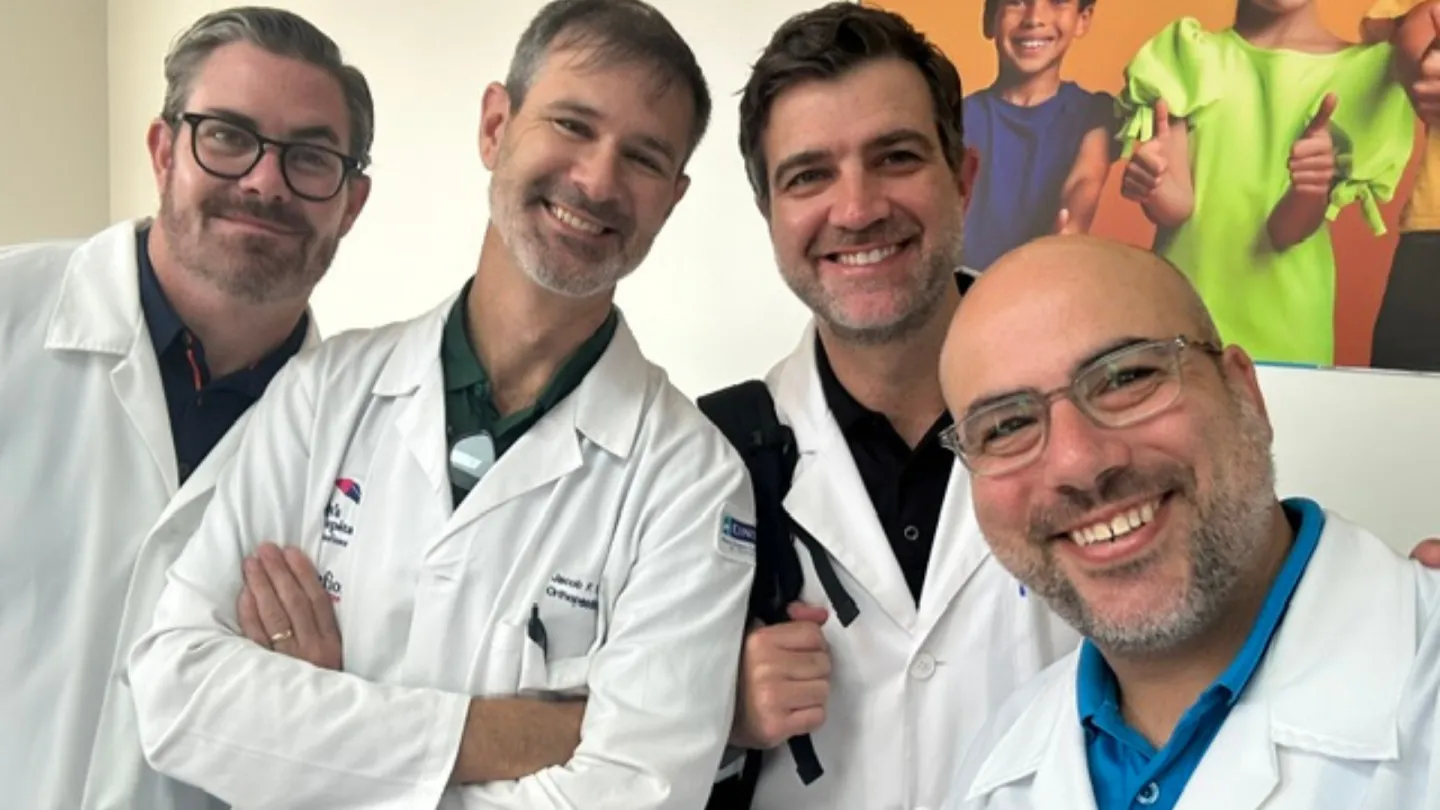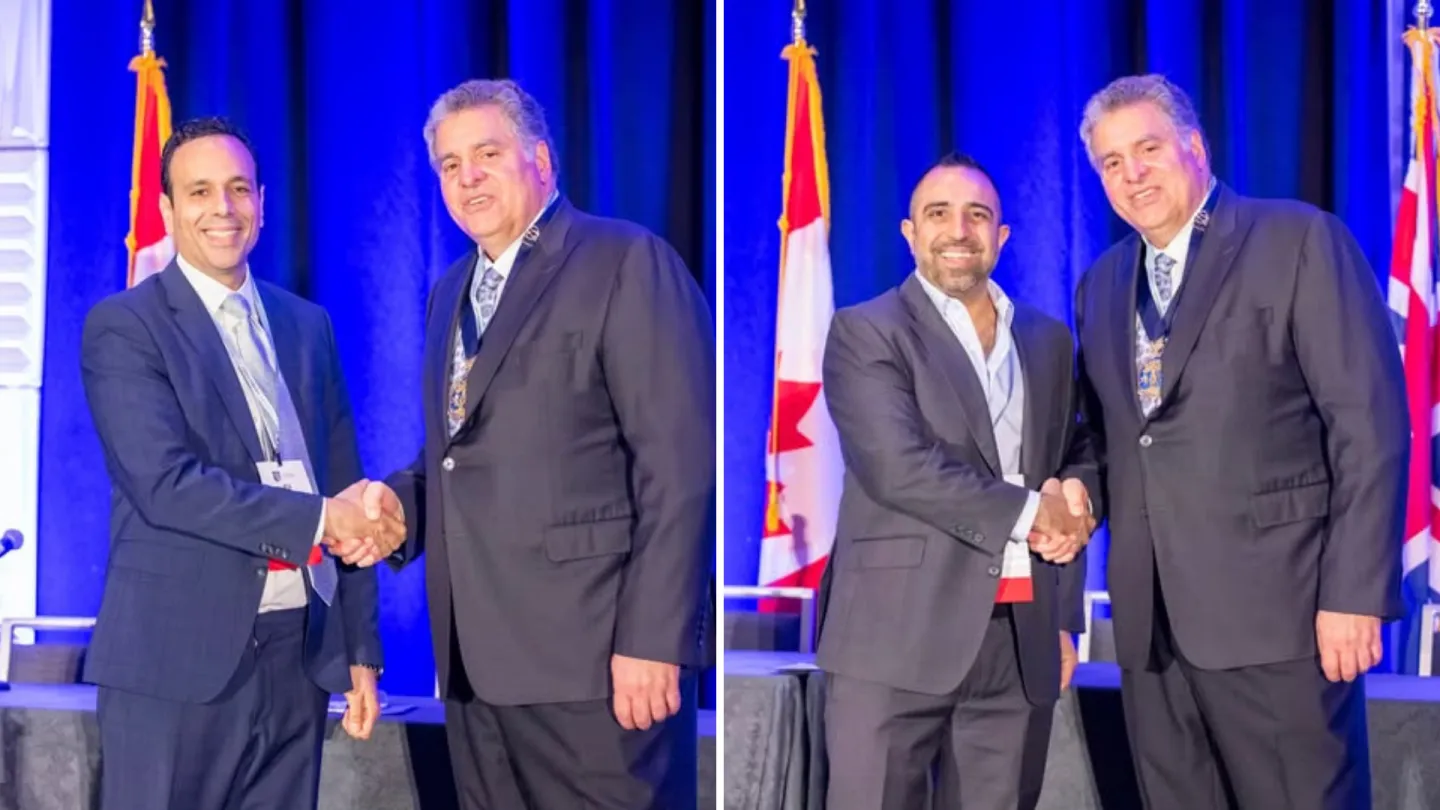Specialized Treatment & Expert Care

Montefiore Einstein Orthopedic Spine Surgery brings together a tremendous breadth of expertise to treat a wide range of spine disorders. As part of the Montefiore Einstein Spine Center, our program offers patients an array of surgical and nonsurgical treatment options, from conventional procedures to minimally invasive and motion-sparing surgeries. We’re ranked in the top 1% of all hospitals in the nation for Orthopedics according to U.S. News & World Report.
Our fellowship-trained specialists are dedicated to the diagnosis and management of complex spine conditions, including adult spinal deformities, degenerative conditions and disorders of the cervical spine. Whatever the individual treatment strategy might be, our goal is to provide patients the care that best suits their unique needs.
As an academic health system, we are constantly striving for innovations in spinal treatment. Our participation in biomechanical, translational and clinical research allows us to explore exciting new methods for the advancement of care within our own health system and beyond.
The experience of our patients and their loved ones—not simply their ailments—demands our full attention. Your dedicated care team will be there to discuss your condition, answer questions, assess treatment options and develop a treatment strategy that is best for you.
Spine conditions can present complex challenges. At Montefiore Einstein, we believe successful outcomes are achieved through appropriate treatment selection, careful surgical planning and meticulous surgical techniques.
Using a collaborative multidisciplinary approach, we bring together spine surgeons, anesthesiologists, nonoperative spine specialists and rehabilitation medicine physicians to assess and customize a patient-specific treatment plan.
Our status as an academic health system puts us at the forefront of our field. Together with our Albert Einstein College of Medicine, one of the highest NIH-funded institutions in the country, we are continually conducting research with the goal of discovering better treatment options for our patients. We routinely present our research findings and publish our study results in peer-reviewed publications.

Conditions We Treat
Montefiore Einstein treats a wide spectrum of orthopedic conditions, a selection of which you will find here. In addition to these, we have experience treating many other related conditions. Please contact us to schedule a consultation to review and discuss your specific healthcare needs.
Cervical radiculopathy or myelopathy
Degenerative lumbar spinal stenosis
Degenerative spondylolisthesis (DS)
Isthmic spondylolisthesis
Spondylolysis & spondylolisthesis
Herniated nucleus pulposus
Thoracic myelopathy
Adult spinal deformity
Scoliosis
Kyphosis
Spine tumors
Back problems & injuries
Bacterial infections of the spine
Cervical disc herniation
Sciatica
Lumbar spinal stenosis
Cervical spondylosis
Lumbar spondylosis
Lumbar herniated disc

Advanced Spine Treatments We Offer
We design our treatment plans to return our patients to health as quickly as possible. Whenever we can, we use nonoperative treatments. When surgery is needed, we always consider the most conservative approaches first. Some of the common procedures we perform at Montefiore Einstein include:
Anterior cervical discectomy (decompression) and fusion (ACDF) is a procedure commonly used to surgically manage patients experiencing neck and arm pain. In more extreme cases, spinal cord compression may cause difficulty with hand function and balance. If untreated, this can lead to loss of function in the arms and legs.
This surgery involves making a small incision on the front of the neck. Often, the incision can be hidden in the natural creases of the skin, allowing for excellent cosmetic results. Through this incision, a surgeon carefully exposes the spine with minimal trauma to the neck structures. With the spine exposed, specialized tools are used to carefully remove the affected disc in order to decompress the nerves and spinal cord. A small bone graft is positioned in place of the removed disc. A small titanium plate and a set of titanium screws are used to maintain the spinal alignment and graft position while the adjacent spinal bones fuse together over time.
Most patients are discharged from the hospital the morning after surgery. While many patients do not require bracing, this is determined by the surgeon on a case-by-case basis. Most patients feel improvement in their symptoms immediately and continue to improve over the next several weeks.
Posterior cervical decompression and fusion is a procedure commonly used to surgically manage patients experiencing neck and arm pain. In more extreme cases, spinal cord compression may cause difficulty with hand function and balance. If untreated, this can lead to loss of function in the arms and legs.
This procedure is effective in and applicable to a number of scenarios. It is considered for patients with worsening symptoms due to spinal cord compression, patients with multiple areas of disease and patients with cervical deformity that makes lifting the head difficult. This posterior technique is also used when certain conditions make surgery through the front of the neck (ACDF) more difficult and/or dangerous.
In this procedure, an incision is made on the back of the neck. The back of the spine is exposed by carefully moving the muscles aside. Screws are placed in the thick bone on either side of the spine. The bone composing the back of the spinal canal is carefully removed, thereby taking pressure off the spinal cord. Rods are affixed to the previously placed screws to maintain the spinal position until the bone has fused. Bone graft is added to further facilitate fusion of the spinal bones and ensure stability.
Most patients are discharged from the hospital following a short stay. While many patients do not require bracing, this is determined by the surgeon on a case-by-case basis. Most patients feel improvement in their symptoms immediately and continue to improve over the next several weeks.
Minimally invasive lateral lumbar interbody fusion (LLIF) is a procedure commonly used to surgically manage patients experiencing pain shooting down their legs and back. While not appropriate for every patient, this surgical technique can help decrease surgical pain and facilitate recovery.
In this procedure, a small incision (measuring only a few centimeters) is made on the side of the abdomen. Using specialized tools, the affected disc is removed from between the spinal bones and replaced with bone graft. Screws are placed through small incisions in the back using fluoroscopic or X-ray guidance, avoiding the need for a larger soft-tissue dissection.
When deciding on a treatment plan, the patient and surgeon will discuss symptoms, goals and exam findings to determine the best course of action, and each approach will be considered by the surgeon on a case-by-case basis.
Minimally invasive microdecompression and microdiscectomy is a procedure commonly used to surgically manage patients with a disc herniation. Disc herniations may result in pressure and inflammation, causing severe shooting pain in one or both legs. While many patients will have significant improvement and symptom resolution without surgery, those who fail to improve over time with nonoperative management may benefit from a minimally invasive microdecompression and microdiscectomy.
In this surgery, a small incision (measuring no more than a few centimeters) is made in the back, carefully exposing a small area of the spine. Using specialized tools, the herniated or diseased portion of the disc is removed through a small opening in the spinal canal, leaving the majority of the disc intact.
Most patients are discharged from the hospital the day of surgery. Postoperative plans are determined by the surgeon and vary from patient to patient. Most patients start physical therapy two weeks after surgery and can generally return to full activity by six weeks.
Motion-sparing surgery in the cervical spine is a procedure used to surgically manage patients with disease of the cervical spine without requiring fusion. This helps preserve or maintain motion across the spinal segments. Disease of the neck and cervical spine can cause significant pain and weakness and may require surgery in order to remove pressure from the nerves and spinal cord. Often, patients are best served by a subsequent fusion. However, in some instances, it may be possible to preserve motion and avoid neck stiffness. Our team is trained in multiple motion-sparing techniques that can offer relief without compromising motion.
One motion-sparing technique is called laminoplasty. In this procedure, an incision is made at the back of the neck to carefully expose the spine. Without interfering with the structures that provide stability and motion, the surgeon opens the back of the spinal canal and creates space using bone graft, plates and screws. This decompresses the spine and alleviates pressure, while maintaining stability and motion.
Another surgical option for motion preservation is cervical disc replacement. In this procedure, a small incision is made at the front of the neck to permit careful access to the front of the spine. The entire disc is carefully removed, taking pressure off the nerves and spinal cord. A disc replacement device is then inserted in its place. This can provide relief of presurgical symptoms while preserving motion at the involved surgical site.
When deciding on a treatment plan, the patient and surgeon will discuss symptoms, goals and exam findings to determine the best course of action. While this procedure may not be appropriate for every patient, the approach will be considered by the surgeon on a case-by-case basis.
Your Team of World-Renowned Specialists
Orthopedic Surgery Highlights
Physician Referrals
Montefiore Einstein embraces a collaborative approach.
If you have a patient who could benefit from our services, please reach out.
718-920-2060
Schedule a Visit
Have a general question or concern?
We’re available to help you by phone or email.
• 718-920-2060 • orthofeedback@montefiore.org












